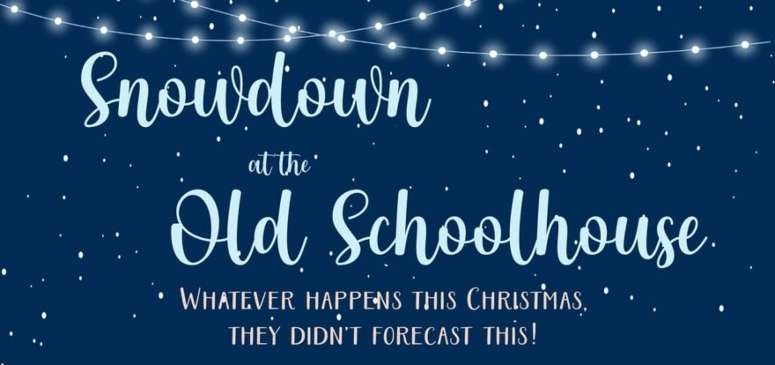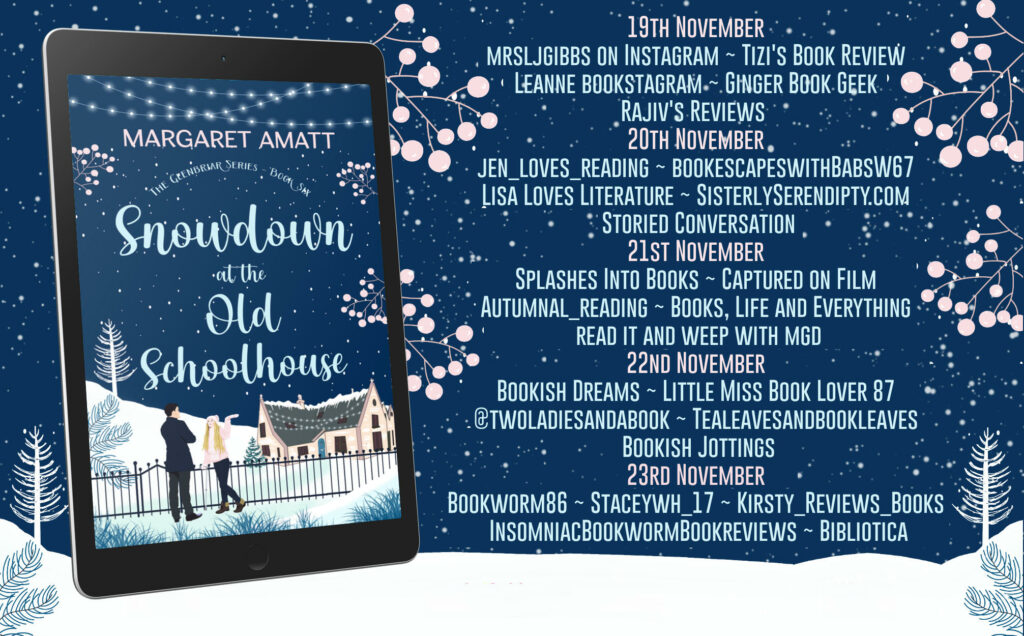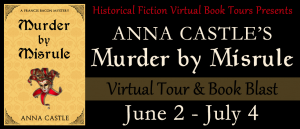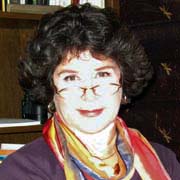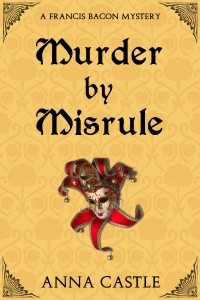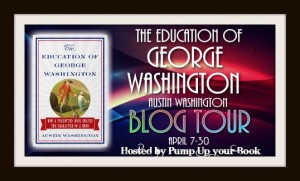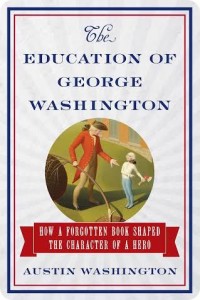I’m so excited to bring you this guest post from Caroline James, author of The French Cookery School. I read the novel, and it’s a delightful story full of food, France, friendship, and second-chance romance. Scroll down for purchase links after guest post. I also reviewed one of her previous novels, The Cruise. Thanks to Ms. James and Rachel’s Random Resources for this opportunity.
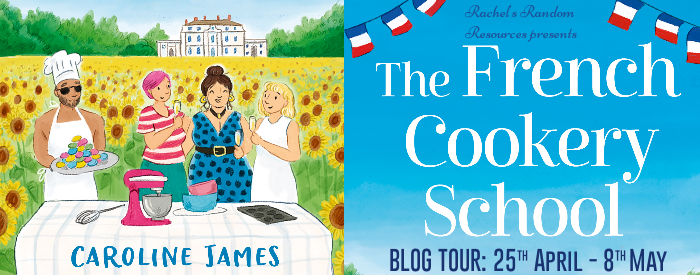
In Their Words: Caroline James 
In this guest post I ask – what is it about romcom fiction that keeps readers coming back for more?
When asked what genre I write, I’m never quite sure how to answer and romcom is generally my reply. My books feature romance at the heart of every story and always a happy ending but I endeavour to cover serious issues and include plenty of humour too.
So what is romcom? Romantic comedies, or romcoms for short, have long been a popular genre in fiction and audiences have always been drawn to stories of love, laughter, and happily-ever-after endings. At its core, romcom fiction is all about the journey of two people falling in love. The best romcoms not only make us laugh, but they also make us care deeply about the characters and their relationships. We root for them to overcome obstacles and find their way to each other, even if we know that the outcome is predetermined. There’s a certain comfort in knowing that, no matter how crazy and chaotic life gets, true love will always find a way.
Romcoms allow us to escape into a world where the odds may be stacked against our protagonists, but their determination and chemistry ultimately win out. We can live vicariously through their ups and downs, knowing that, in the end, everything will work out just the way it’s supposed to. In recent years, thankfully, there’s also been a push for more diverse representation in romcoms, which has opened up the genre to a wider audience and allowed for even more wonderful stories to be told.
Romcoms also offer a refreshing break from the heavier, more serious stories that dominate much of fiction. While there’s certainly a place for complex dramas and serious literary works, romcoms remind us that sometimes, having fun is okay. They offer a chance to escape into a light-hearted world where love and laughter are the only things that truly matter. I love to leave my readers feeling uplifted and in a good mood.
So the next time you’re in the mood for a little romance, a feel-good movie and a lot of fun, don’t hesitate to pick up a rom-com!
About the book, The French Cookery School 
- Publisher : One More Chapter (April 25, 2024)
- Publication date : April 25, 2024
- Language : English
Mix together a group of mature students:
A culinary Sloane, a take-away cook and a food journalist.
Add in:
A handsome host
Season with:
A celebrity chef
Bring to the boil:
At a luxurious cookery school in France!
Waltho Williams has no idea what he’s letting himself in for when he opens the doors of La Maison du Paradis, his beautiful French home. But with dwindling funds, a cookery school seems like the ideal business plan.
Running away from an impending divorce, super-snob Caroline Carrington hopes a luxurious cookery holiday will put her back on her feet. Blackpool fish and chip café owner Fran Cartwright thinks she’s won the lottery when her husband Sid books her on a week working alongside a celebrity chef. Meanwhile, feeling she is fading at fifty, journalist Sally Parker-Brown hopes her press week covering the cookery course will enable her to boost her career.
But will the eclectic group be a recipe for success, or will the mismatched relationships sink like a souffle?
Whip out an apron, grab a wooden spoon and take a culinary trip to La Maison du Paradis, then sit back and enjoy The French Cookery School!
Buy, read, and discuss this book:
Click to Purchase | Discuss on Goodreads
About the author, Caroline James 
Caroline James always wanted to write, but instead of taking a literary route, followed a career in the hospitality industry, which included owning a pub and a beautiful country house hotel. She was also a media agent representing celebrity chefs. When she finally glued her rear to a chair and began to write, the words flowed, and several novels later, she has gained many bestseller badges for her books.
Her Amazon Top Five Bestseller, The Cruise, is described as: ‘Girl power for the over sixties!’ Caroline’s hilarious novels include The Spa Break and The Best Boomerville Hotel, depicted as ‘Britain’s answer to the Best Marigold Hotel’.
The French Cookery School is set in the magical environment of La Maison du Paradis, where an eclectic group of guests get more than they bargained for when they come together for an unforgettable week.
Caroline likes to write in Venus, her holiday home on wheels and in her spare time, walks with Fred, her Westie, or swims in a local lake. Caroline is a member of the Romantic Novelists Association, the SoA, ARRA and the Society of Women’s Writers & Journalists. She is also a speaker with many amusing talks heard by a variety of audiences, including cruise ship guests.
Books by Caroline James:
Boomerville at Ballymegille
Connect with Caroline:
Website | Facebook | Instagram | X (Twitter)
Visit the Other Great Blogs on This Tour
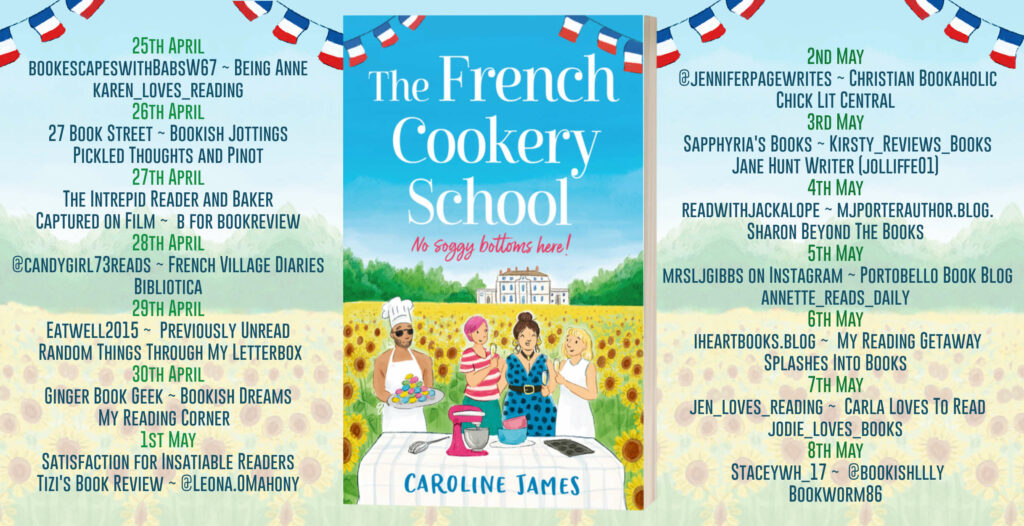

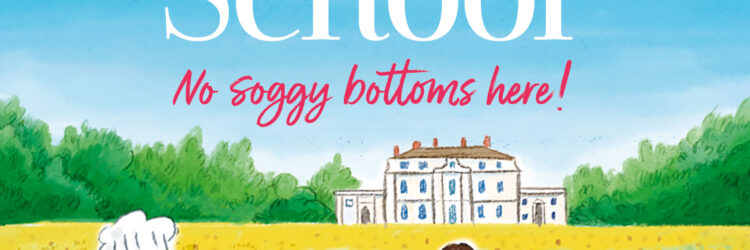
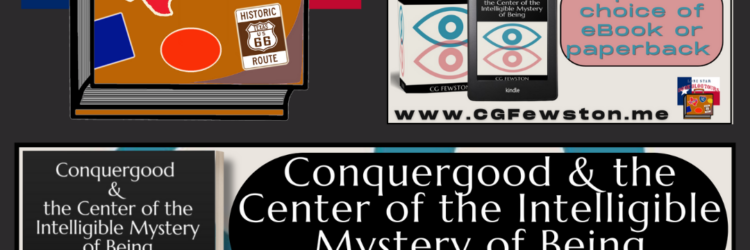
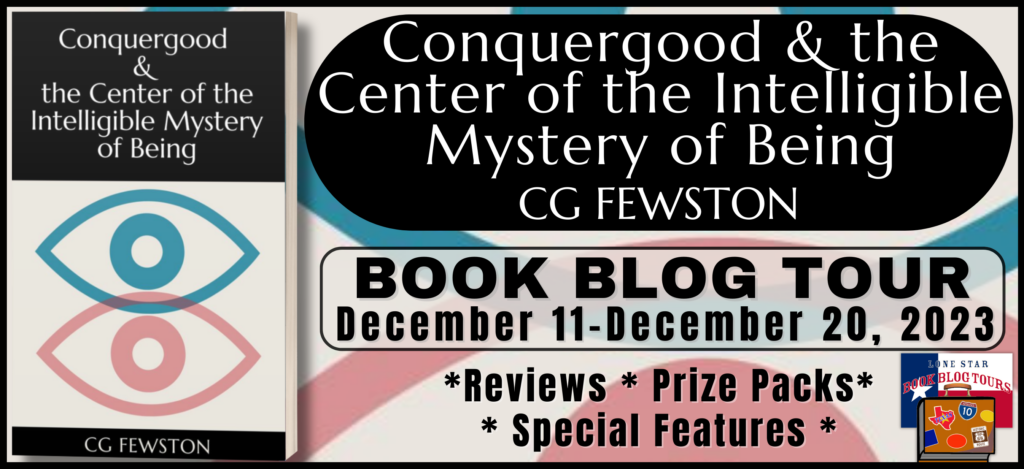








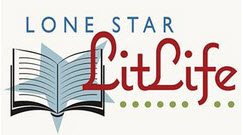


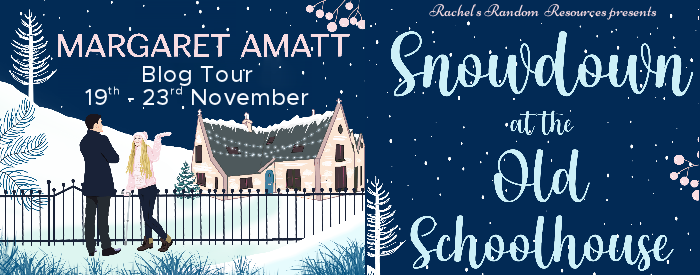
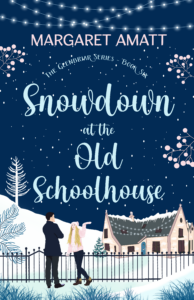 They didn’t forecast this!
They didn’t forecast this!
